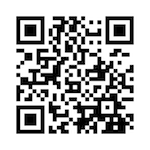Easter
Rabbits and Resurrection
John 20.1-18
I wonder if any of you ran over the Easter bunny on the way to church yesterday. I came over early yesterday, well early for me, a not so morning person and I thought hum, is this the best time to see rabbits just before dawn? When I was a child I loved the stories of Brer Rabbit, from the Uncle Remus tales. As a kid I always thought Brer Rabbit to be a furry children’s character. Imagine how small I felt when I discovered Brer Rabbit represented the way African Americans and Cherokee had for centuries relied on trickster qualities to outwit the European settlers and slaveholders. By missing this dimension I’d colluded unknowingly with a domesticated, non-political reading of the story for all those years.
But we do just the same with the Easter story all the time. We see a woman, a stone, an empty tomb, and a garden, and we think, what a beautiful timeless story about grief and joy and recognition and faith. But it’s not a timeless story. It’s saying one clear thing: all the promises of the Old Testament have come true right now. Let me explain. There are two great themes in the Old Testament. The first is the covenant. The Hebrews were slaves in Egypt. God gave them freedom by the blood of the Passover and the parting of the Red Sea. At Mt. Sinai God gave the Israelites a way to keep that freedom by making a covenant with them. The symbol of that covenant was the Ten Commandments, written on two tablets and carried around in a large container like a coffin known as the Ark of the Covenant. Eventually a Temple was built in Jerusalem to house the Ark, and the Israelites always knew they could go there to be reconciled with God and renew their covenant.But the Temple was destroyed and the Ark was lost and the people deported into exile in the sixth century B.C.
While in exile in Babylon the people pondered their plight and wondered if God would visit them with a new exodus, and perhaps a new covenant. But they also went further back and identified a second theme in their history. That theme was creation. The liberator God was also the creator God who had made not just Israel but all the nations and indeed the whole universe. The power of Old Testament faith lies in the intersection of these themes of creation and covenant.
Now let’s look at what happens when Mary goes to the tomb on Easter morning. What does she see? Two things. First, she looks into the tomb and she sees “two angels in white, sitting where the body of Jesus had been lying, one at the head and the other at the feet.” That’s a pretty direct indicator that she’s looking at a new ark of the covenant – because the original Ark of the Covenant, in the Temple, had had two angels or seraphim, one at the head and the other at the feet. So what we’ve got here is a clear statement that Mary is looking at a new covenant. Second, she enters into conversation with a person she takes to be the gardener. Think for a moment. Where does the creation story focus in? On a man, and a woman, in a garden. God is the gardener who creates the garden of Eden, a symbol of the whole of creation. And in case we don’t get it John reminds us this was the first day of the week, in a heavy nudge toward the creation story. So when Mary meets the risen Jesus, we’re immediately supposed to think, “this is a new creation!” The empty tomb is a new covenant and the risen Lord is a new creation. Behold! This is everything the Old Testament was hoping for! In a fabulous moment of irony so profound it’s almost tragedy, and comedy so broad it’s almost farce, Jesus says to Mary, “Whom are you looking for?” The risen Jesus, embodying a new creation and a new covenant, asks Mary, “Whom are you looking for?” Feel the power of the irony. Jesus is whom Mary is looking for. Jesus is what Israel is looking for. Jesus is the trickster rabbit who’s outwitted the Romans and the Jerusalem leaders, and pulled a fast one on sin and death, and pulled the rug from under evil, and even gets time to play a gentle trick on Mary before the celebrations begin.
And here is this tantalizing moment where we, the readers, know all these things... but Mary can’t see them. Doesn't that make us feel so knowledgeable, so wise, so much cleverer than Israel, so much more perceptive than Mary? Yes, until suddenly the question is turned on us. “Whom are you looking for?” I’m going to make a guess. I’m going to guess that we come to this garden with two hopes in our hearts. One hope is to make good what we already have, to restore our fragile relationships, to find a path of truthtelling and forgiveness and reconciliation with family members, friends, neighbors, colleagues, strangers and enemies. And to do just the same with God. That’s our first hope – to make a new covenant with God and our neighbor, that makes it possible for us to heal the mistakes of our past and turn strangers and enemies into friends and companions. The second hope is to discover something we’ve never known – a whole new world, a completely new life, beyond the fear of death, beyond the limitation of our mortal bodies, beyond the fragility of our decaying world. That’s our further hope – to find a new creation, that makes it possible to live with God forever.
Aren't these our two most profound longings – for a healed past and a wondrous future? Aren’t we yearning for a new covenant and a new creation? Aren’t we, deep down, just the same as the Israelites in the Old Testament and Mary in the garden? Isn’t this what we’re looking for? Well, I’ve got good news for you. Mary turned round, and saw Jesus. And in Jesus she realized she was looking at a new covenant and a new creation. She was looking at a healed past and life with God forever. Here’s the good news. You’re in the garden too. You’re looking for what Mary was looking for. Mary found everything she longed for and much, much more. So can you. Jesus is risen. His resurrection means a new covenant and a new creation. The good news is – both are yours.
Happy Easter Season. Pastor Jim
- Jim McDonald's blog
- Log in to post comments
God, as known to us in Jesus Christ, welcomes all.
We welcome people of any race, national origin, ethnicity, gender, sexual orientation, age, social or economic status, employment status, or life situation; including people with physical or mental illness or disability.
We practice loving acceptance of each person and respectful discussion
 of our differences.
of our differences.
Affiliated to Reconciling Ministries Network
Recent News
Sunday Worship Service - July 30 at 10:00 am
July 30, 2023 - 9:51am
Sunday Worship Service - July 23 at 10:00 am
July 23, 2023 - 9:48am
Sunday Worship Service - July 16 at 10:00 am
July 16, 2023 - 10:17am
Vacation Bible School
July 14, 2023 - 10:10pm
Sunday Worship Service - July 9 at 10:00 am
July 9, 2023 - 9:53am






